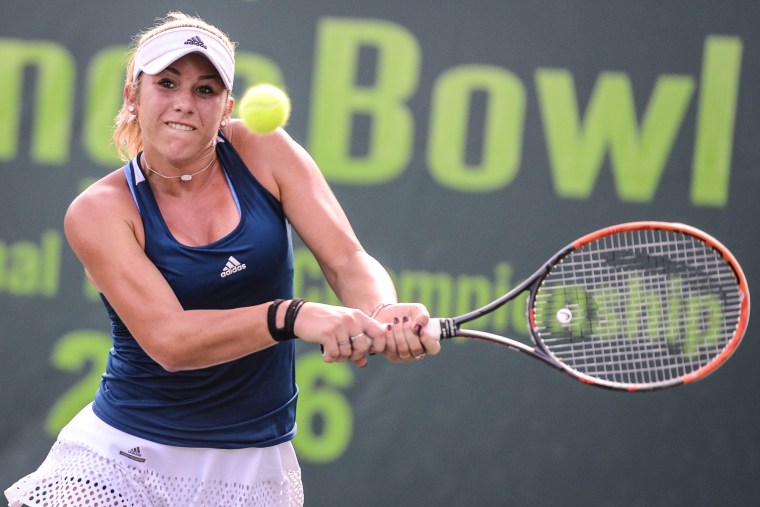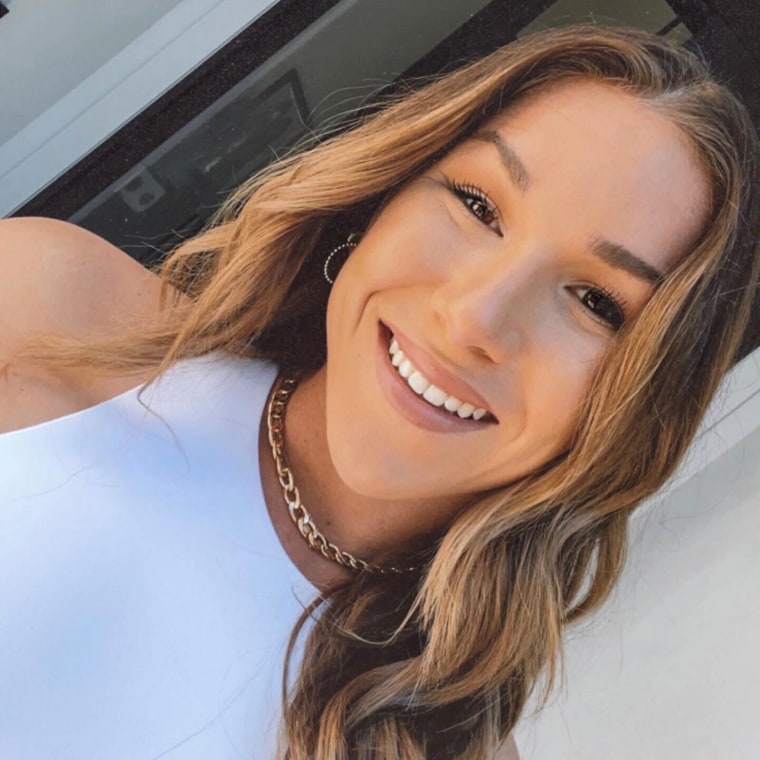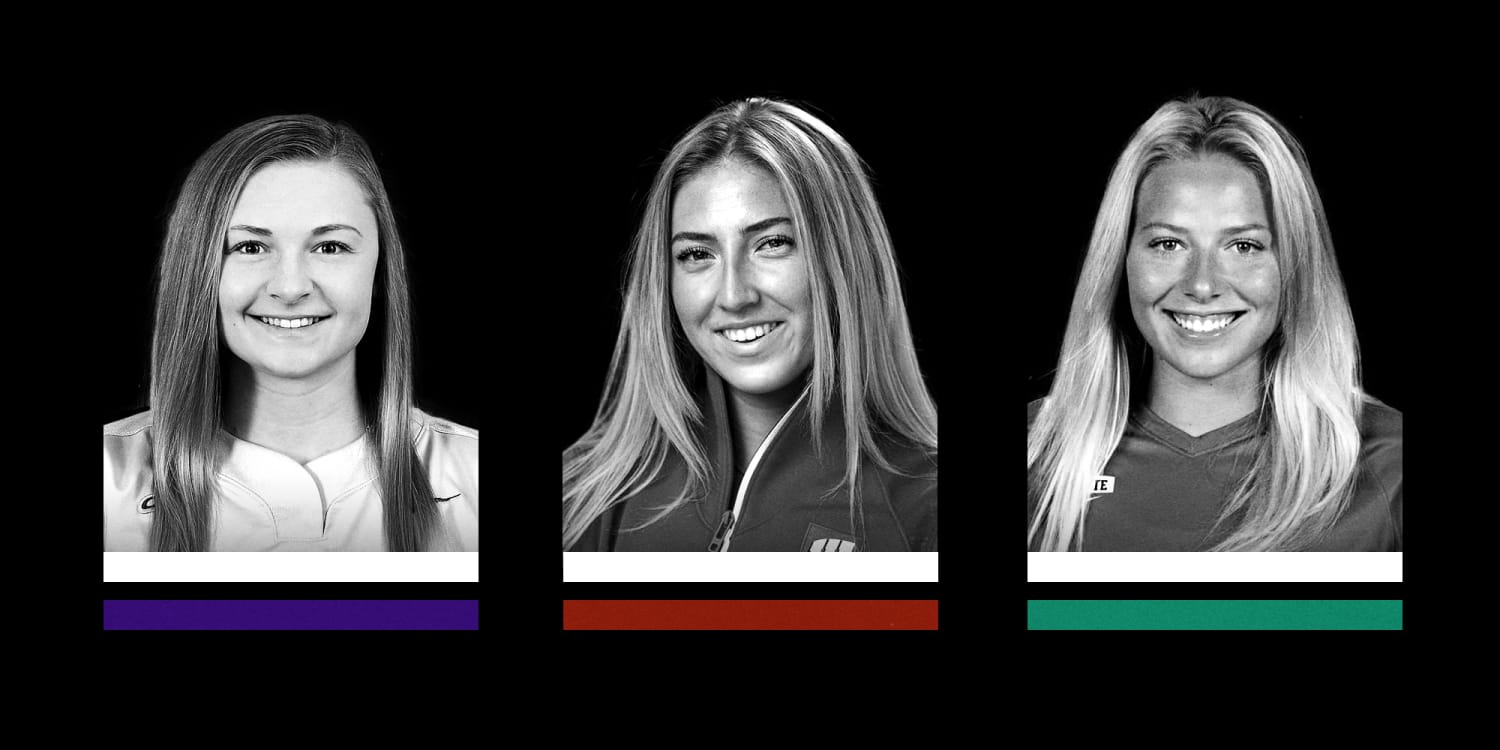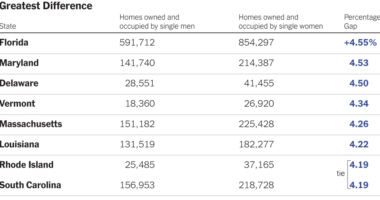As a teenager, Victoria Emma was one of the top junior tennis players in the country. Colleges were recruiting her. She got to travel the world for matches. With her tennis career going so well, no one, including Emma’s parents, had any clue that she had tried to end her life — until they found suicide notes stashed away in her bedroom.
“They had no idea anything was going on,” Emma, now 22 and playing professionally, said. “I don’t blame them. I was very good at hiding it. There’s plenty of times when I’m on the court and I have to do that.”
Switched into homeschool full-time in high school so she could focus on tennis, she started feeling disconnected from her friends and overwhelmed by the demands of her sport. It had taken over her identity.
“When tennis wasn’t going well, I didn’t have a way of handling that,” Emma, of Delray Beach, Florida, said. “Even when it was going well, there were people where all they talked about with me was tennis.”

Since the beginning of March, three high-profile college student-athletes have died by suicide across the United States. On their fields of play, the three young women projected indestructibility: Katie Meyer as a star goalkeeper on Stanford’s soccer team; Sarah Shulze as a top runner for the University of Wisconsin-Madison; and Lauren Bernett as a standout softball player for James Madison University.
But off the field, all three were secretly struggling.
Meyer’s parents described the 22-year-old as happy and said they hadn’t seen any signs that she was thinking of killing herself. Searching for answers as she spoke to NBC’s “TODAY” show on March 4, her mother, Gina Meyer, pointed to everything that her daughter was juggling at once.
“There’s so much pressure I think on athletes, right, especially at that high level, balancing academics and a high competitive environment. And there is anxiety and there is stress to be perfect, to be the best, to be No. 1,” she said.
The family of the 21-year-old Shulze said something similar in a statement on April 15: “Balancing athletics, academics and the demands of every day life overwhelmed her in a single, desperate moment.”
Feeling like there is too much on their plates, experts say, is not uncommon for student-athletes, who put an enormous amount of pressure on themselves to perform at the highest level, both in their sports and in their academics. It’s a trait that may have motivated them in their sport, they added, but it can lead to unrealistic expectations.
“Perfectionism can come out with a particular tenacity for student-athletes.”
“Perfectionism can come out with a particular tenacity for student-athletes,” said Tommy Fritze, a sport and performance psychologist at the health and counseling center at the University of Denver, whose role is devoted to student-athletes and the athletic department. “The demands are high, and then if you’re trying to meet those demands perfectly, or perform perfectly in all those areas, that can be a really problematic recipe.”
Being a student-athlete does not come with an inherently higher risk of mental health problems; data from a nine-year analysis showed that the suicide rate among NCAA athletes was lower than the general population from 2004 to 2012. And playing a team sport has benefits for mental health, said Stephany Coakley, the senior associate athletic director for mental health, wellness and performance at Temple University, a certified mental performance consultant and the diversity and inclusion division head for the Association for Applied Sport Psychology.
“There are many protective aspects of being affiliated with a collegiate sport, like being motivated toward accomplishing something big, working with a team, being physically active. Oftentimes they’re outdoors, they’re with friends,” she said.
But there are some risk factors, too, she added, including risk of injury, being too busy to get enough sleep because of the rigorous schedule, and the risk of low self-esteem if the student-athlete does not feel that they are good enough for their coach or team.
It was not until Emma shared her mental health challenges on her Instagram account and on the website of The Madison Holleran Foundation, a suicide prevention nonprofit group founded by the family of a University of Pennsylvania student-athlete who died by suicide in 2014, that she learned other athletes were having a hard time as well.
Many, including some of her former tennis competitors, have reached out since she published her account. She feels a lot more athletes are hiding what they’re going through, just as she initially did.
“It’s a fear about being judged. It’s a fear of being seen as weak when you’re supposed to be seen as a competitive athlete,” she said.
Getting struggling student-athletes help
Getting student-athletes the help they need may not come down to a lack of on-campus resources, experts say, but rather, it’s convincing them to use the resources that are there.
At the University of Denver, among the services offered to student-athletes, on top of the existing counseling, substance use support and other resources for all students, are individual counseling as well as group therapies.
The group therapies offer general coping support for student-athletes as well as for more targeted needs, from support for injuries to marginalized identities to disordered eating, Fritze said. Student-athletes also have access to nutrition and psychiatry services if necessary.
Coakley, of Temple University, holds meditation sessions with student-athletes. She also emphasizes to them that especially during their freshman year, it’s important to FaceTime or call their friends from home to maintain proper mental health. Chances are, she said, friends from home could use the phone call as well.
“Oftentimes, they are so eager to do this new life, they lose their old life,” she said. “But their old life is the support.”
She also recommended doing activities they enjoy outside of their sport, such as going to concerts and shows.
“When you’re struggling in your sport, that can’t be your safe space anymore,” she said. “Find community in and out of sport.”
Suicide is the second-leading cause of death for all college students in the U.S., according to the American Foundation for Suicide Prevention. The NCAA did not immediately respond to an inquiry from NBC News regarding suicide prevention and other mental health practices among its student-athletes. But on its website, it lists resources for anxiety, depression, eating disorders and other mental health conditions. It also has education modules for coaches for helping struggling student-athletes.
“When you start setting a bar that you can’t reach and you raise it when you get close, it makes it beyond overwhelming.”
The recent deaths of college student-athletes come amid an increase in suicide rates among women ages 20 to 24 over the last couple of decades. Men ages 20 to 24 have died by suicide at a far higher rate, but the increase has been smaller.
In 2001, there were 3.06 suicides per 100,000 women and 20.48 for every 100,000 men, according to CDC data. By 2020, the most recent year available of federal health data, the rate for female suicides had more than doubled, going up to 6.4, while for men the rate rose about 40 percent, to 28.73.

Once her parents found out how much Emma, the pro tennis player, was struggling in high school, they immediately got her into therapy, which Emma said offered her a life raft as she dealt with the pressures of being an elite athlete through the rest of high school and later at the University of Florida.
She encouraged other student-athletes who are feeling overwhelmed by the demands they are putting on themselves to find someone to talk to — now.
“When you start setting a bar that you can’t reach and you raise it when you get close, it makes it beyond overwhelming,” she said.
If you or someone you know is in crisis, call the National Suicide Prevention Lifeline at 800-273-8255, text HOME to 741741 or visit SpeakingOfSuicide.com/resources.
Source: | This article originally belongs to Nbcnews.com










